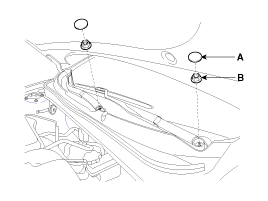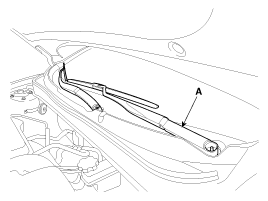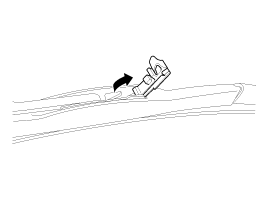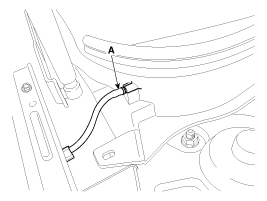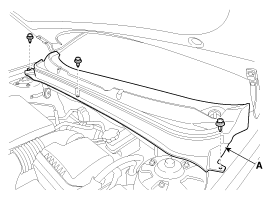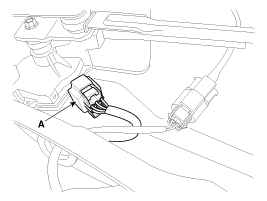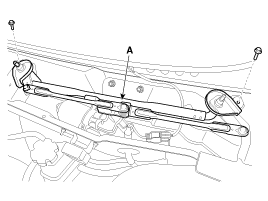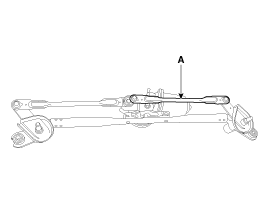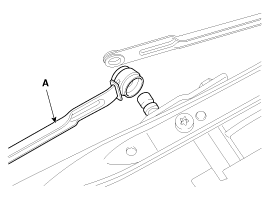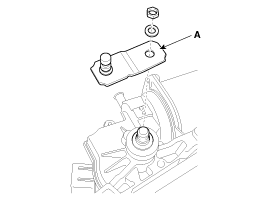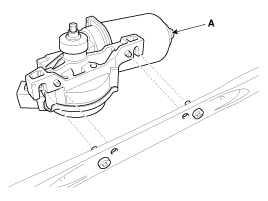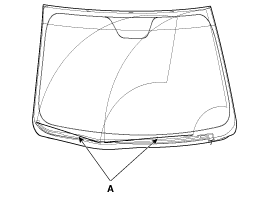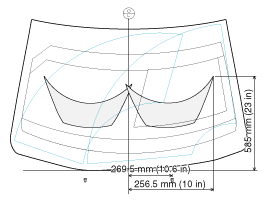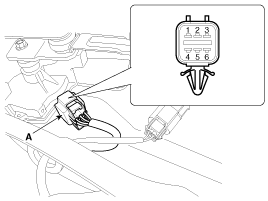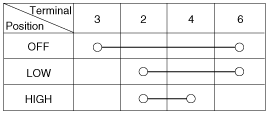 Hyundai Sonata: Front Wiper Motor. Repair procedures
Hyundai Sonata: Front Wiper Motor. Repair procedures
Removal
| 1. |
Loosen the windshield wiper arm nut (A) after removing a wiper
cap (B).
–Ý–µ–∞–Ω–∏–º–æ–±–∏–ª—å –∑–∞–∫–∞–∑–∞—Ç—å - –≤—ã–µ–∑–¥ —Ä–µ–∞–Ω–∏–º–æ–±–∏–ª—è –°–ª—É–∂–±–∞ —ç–∫—Å—Ç—Ä–µ–Ω–Ω–æ–π –º–µ–¥–∏—Ü–∏–Ω—ã –¢—Ä–∞–Ω—Å–ú–µ–¥–ê–≤–∏–∞.
|
| 2. |
Remove the windshield wiper arm and blade (A).
|
| 3. |
If necessary, release the wiper blade fixing clip by pulling up
and remove the wiper blade from the inside radius of wiper arm.
|
| 4. |
Disconnect the washer hose (A) connected to cowl top cover.
|
| 5. |
Remove the weather strip and the cowl top cover (A) after removing
rivets.
|
| 6. |
Disconnect the wiper motor connector (A) from the wiper motor
& linkage assembly.
|
| 7. |
Remove the windshield wiper motor and linkage assembly (A) after
removing 2 bolts.
|
| 8. |
Hold the wiper motor crank arm and remove the upper linkage (A)
from the wiper motor crank arm.
|
| 9. |
Remove the lower linkage (A) from the wiper motor crank arm.
|
| 10. |
Remove the crank arm (A) after loosening a nut.
|
| 11. |
Remove the wiper motor (A) after loosening the screws.
|
Installation
| 1. |
Install the wiper motor.
|
| 2. |
Install the crank arm.
|
| 3. |
Install the lower and upper linkage to the wiper motor crank arm.
|
| 4. |
Install the wiper motor and linkage assembly and then connect
the wiper motor connector.
|
| 5. |
Install the cowl top cover.
|
| 6. |
Install the windshield wiper arm and blade.
|
| 7. |
Install the wiper arm and blade to the auto stop position.
A : Auto stop position (Blade)
|
| 8. |
Set the cowl top cover on the specified spray position.
|
Inspection
| 1. |
Remove the connector (A) from the wiper motor.
|
| 2. |
Attach the positive (+) lead from the battery to terminal 2 and
the negative (-) lead to terminal 5.
|
| 3. |
Check that the motor operates at low or high speed as below table.
|
 Front Wiper Motor. Components and Components Location
Front Wiper Motor. Components and Components Location
Component Location
1. Cap
2. Nut
3. Wiper arm & blade
4. Rivet
5. Cowl top cover
6. Bolt
7. Wiper motor & linkage assembly
...
 Front Washer Motor. Repair procedures
Front Washer Motor. Repair procedures
Inspection
1.
With the washer motor connected to the reservoir tank, fill the
reservoir tank with water.
...
See also:
Headlamp welcome function
When the headlight switch is in the ON or AUTO position and all doors (and trunk)
are closed and locked, if you press the door unlock button on the transmitter (or
the smart key), the headlights w ...
Front Disc Brake. Components and Components Location
Components
1. Guide rod bolt
2. Bleed screw
3. Caliper bracket
4. Caliper body
5. Inner pad shim
6. Brake pad
7. Pad retainer
...
Exhaust Manifold. Repair procedures
Removal and Installation
1.
Remove the engine cover.
2.
Disconnect the battery negative terminal.
Tightening torque
...

